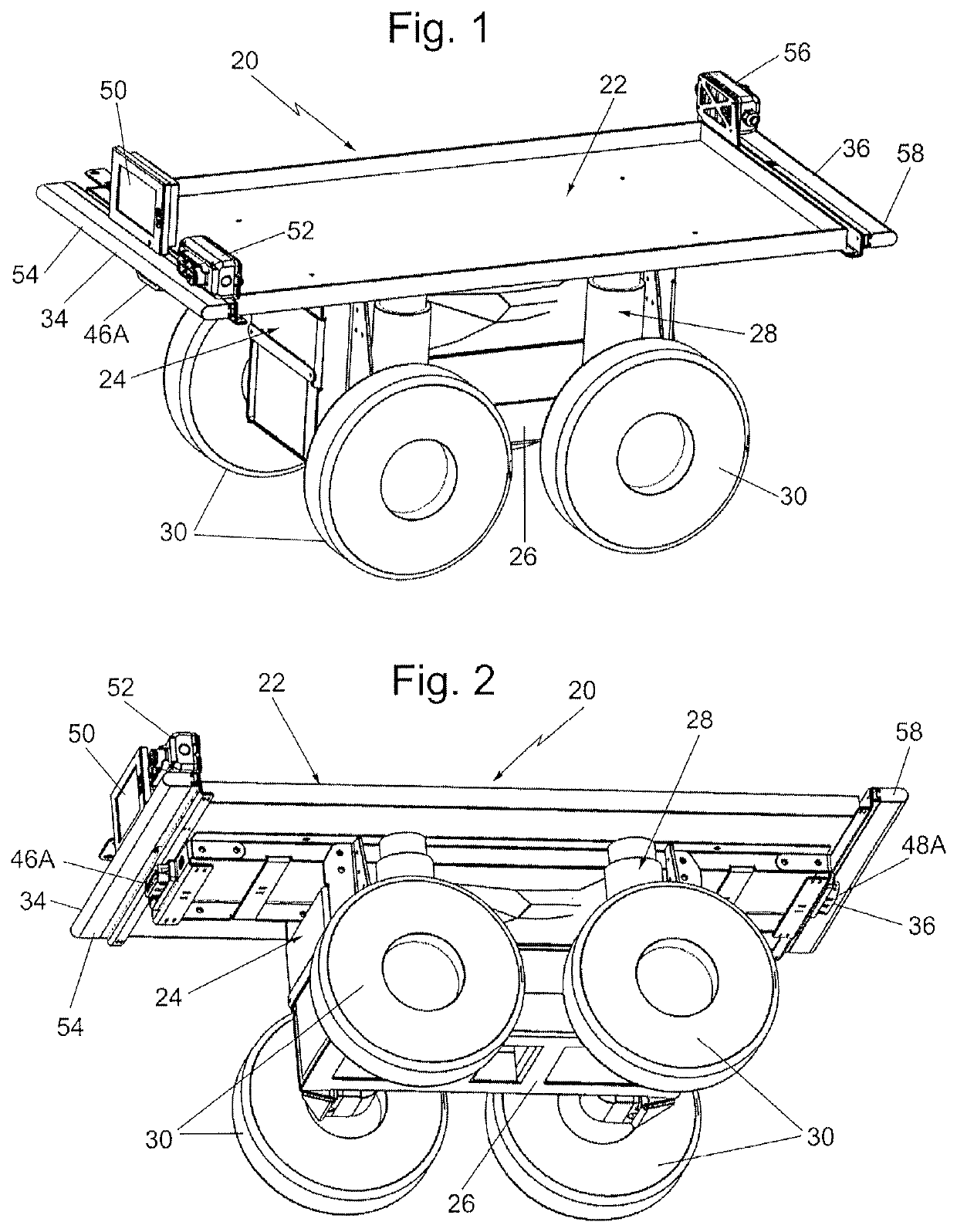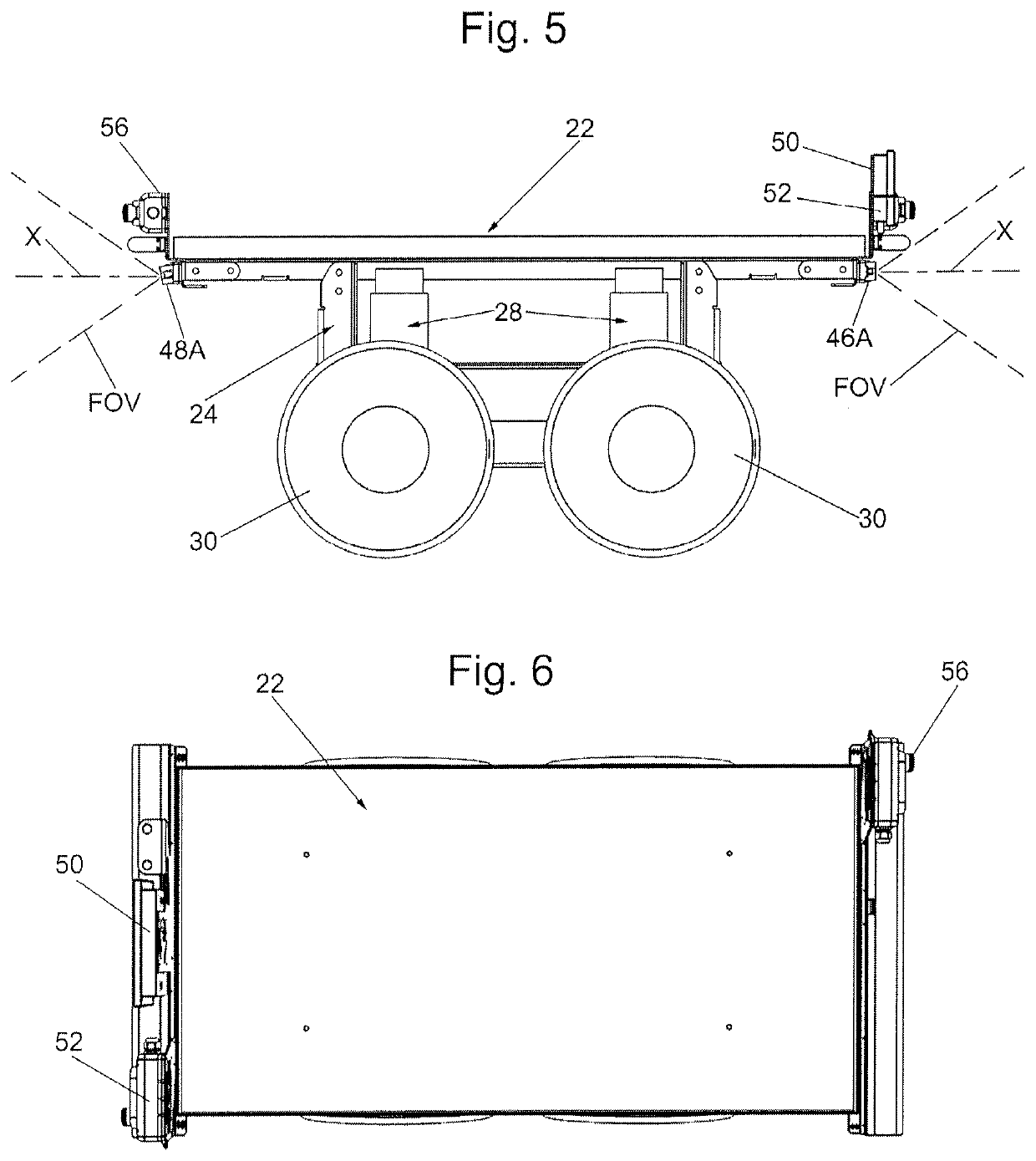Collaborative autonomous ground vehicle
a collaborative, autonomous technology, applied in the field of robotics, can solve the problems of unsuitable collaborative use of machinery and human workers, unsuitable for physical damage hazards, and lack of fixed guidance and communication structures, and achieve the effect of autonomous use in unstructured environments, lacking fixed guidance and communication structures, and being subject to hazards of physical damag
- Summary
- Abstract
- Description
- Claims
- Application Information
AI Technical Summary
Benefits of technology
Problems solved by technology
Method used
Image
Examples
Embodiment Construction
[0060]Referring now to the various figures of the drawing wherein like reference characters refer to like parts, there is shown in FIG. 1 one exemplary collaborative autonomous ground vehicle 20 constructed in accordance with this invention for carrying out various methods of this invention. The autonomous ground vehicle 20 of the present invention, also referred to herein as the robot, is designed to operate collaboratively with humans in unconstrained indoor or outdoor environments to more efficiently perform tasks requiring the collection and transport of items within the environment. In particular, the robot 20 is configured to learn paths of travel within the environment through interaction with a human operator, permitting the robot to subsequently and autonomously repeat its travel along such paths.
[0061]Moreover, the robot is configured to ascertain its local odometry—its location within its operational environment with respect to a starting position in that environment—and ...
PUM
 Login to View More
Login to View More Abstract
Description
Claims
Application Information
 Login to View More
Login to View More - R&D
- Intellectual Property
- Life Sciences
- Materials
- Tech Scout
- Unparalleled Data Quality
- Higher Quality Content
- 60% Fewer Hallucinations
Browse by: Latest US Patents, China's latest patents, Technical Efficacy Thesaurus, Application Domain, Technology Topic, Popular Technical Reports.
© 2025 PatSnap. All rights reserved.Legal|Privacy policy|Modern Slavery Act Transparency Statement|Sitemap|About US| Contact US: help@patsnap.com



